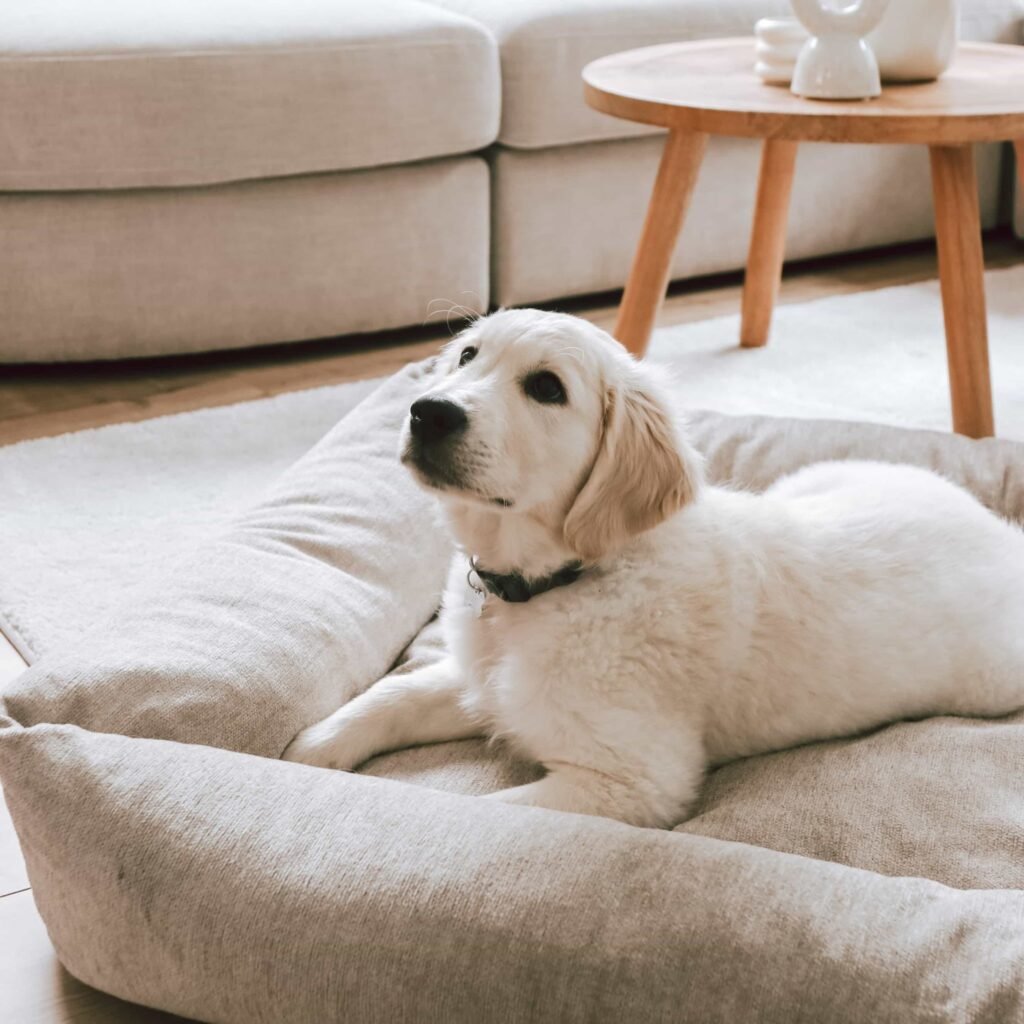Giving your dog friends a cozy and encouraging relaxing spot is very important to you as loving pet parents. A dog’s bed is a haven where they go to find comfort, relaxation, and renewal. It’s more than just a piece of furniture.
However, A dog’s bed has a limited lifespan, just like any beloved item. This article looks at the variables that affect how long your dog’s bed lasts and provides advice on when to replace this vital component of their health.
1. Material Quality
The lifespan of your dog’s bed is significantly influenced by the quality of the materials used in its construction. Robust filler ingredients and sturdy, long-lasting fabrics will fare better against everyday wear and tear than inferior substitutes. Invest in a dog bed like you can buy in The Red Dog Company that can withstand normal wear and spills by selecting durable materials that are easy to clean.
2. A Look at Breed and Size
Your dog’s breed and size may impact how well their bed holds up. Smaller breeds might be kinder to the bed’s structure, whereas larger breeds might strain it more. Furthermore, some breeds are more likely to chew and dig, which can hasten a bed’s degradation. Choosing a bed that fits your dog’s size and temperament can be easier if you know their unique wants and behaviors.
3. How Often You Wash
Dogs may be filthy, and dirt, fur, and smells tend to accumulate on their beds. Maintaining hygiene and extending the bed’s life require routine washing. Your dog’s washing habits will determine how often you wash it, but generally speaking, cleaning the bed cover once a month and the bed itself every three to six months will help keep it looking nice.
4. Wear and Tear Indications
Watch out for indications of deterioration on your dog’s bed. It might be time for a replacement if you see loose seams, flattened cushioning, or structural problems. Check the bed frequently so any issues can be identified early and fixed immediately. If you put off replacing them when they show serious wear, your dog’s support and comfort may suffer.
5. Modifications to Your Dog’s Health
Your dog’s need for a bed may also change if their health or level of movement changes. Purchasing an orthopedic bed with enough support is essential for older dogs or those with orthopedic problems. When your dog becomes older or has health issues, consider evaluating their bed to ensure it meets their changing needs for comfort and support for their joints.
6. Allergies and Hygiene
Keeping your dog’s environment clean and hygienic is crucial to their wellbeing. A bed that gathers dust, pet dander, or other allergens might worsen your dog’s allergies. Frequent washing may help, but if you find it difficult to maintain an allergen-free bed, you may need to replace it more frequently or choose a hypoallergenic option.
7. Distasteful Smells and Odors
Dog bedding may eventually retain smells from usage, sweat, and accidents. Even while washing can assist, lingering, disagreeable odors could mean the bed is nearing the end of its useful life. It may be time to consider getting a new bed if you are having trouble getting rid of smells even after cleaning it frequently.
8. Modifications to living arrangements or way of life
Your dog’s sleeping requirements may change if your lifestyle or living situation changes. Have you recently moved to a new house, brought in a pet, or undergone any other major life changes? Please consider how these things affect your dog’s behavior and how their bed looks. You can assist your dog in adjusting to their changing surroundings by adjusting the bed or replacing it if needed.
9. Comfort and Personal Preferences
Just like people, dogs have preferences regarding where they sleep. Observe your dog’s actions and nonverbal cues. It can be a sign that the bed is no longer fulfilling their comfort needs if they constantly pick different places to sleep or show signs of restlessness. Examining several bed designs or materials may help you find one that suits your dog’s tastes better.
10. Overarching Replacement Guidelines
Although every dog’s situation is different, you should generally replace your dog’s bed every one to three years. This period enables you to evaluate the state of the bed routinely and takes into consideration normal wear and tear. The recommended replacement interval, however, can vary depending on your dog’s habits, size, and material quality.
Caring for Your Dog’s Health with Conscientious Bedtime Rituals
A dog’s bed is essential to their well-being beyond simply providing a comfortable place to sleep. To guarantee that your dog always has a cozy and supportive place to sleep, regularly check the state of the bed, consider their evolving demands, and take care of wear and tear.
You may provide your dog a haven that encourages sound sleep and general contentment by remaining aware of their behavior and taking a proactive approach to bed care.
